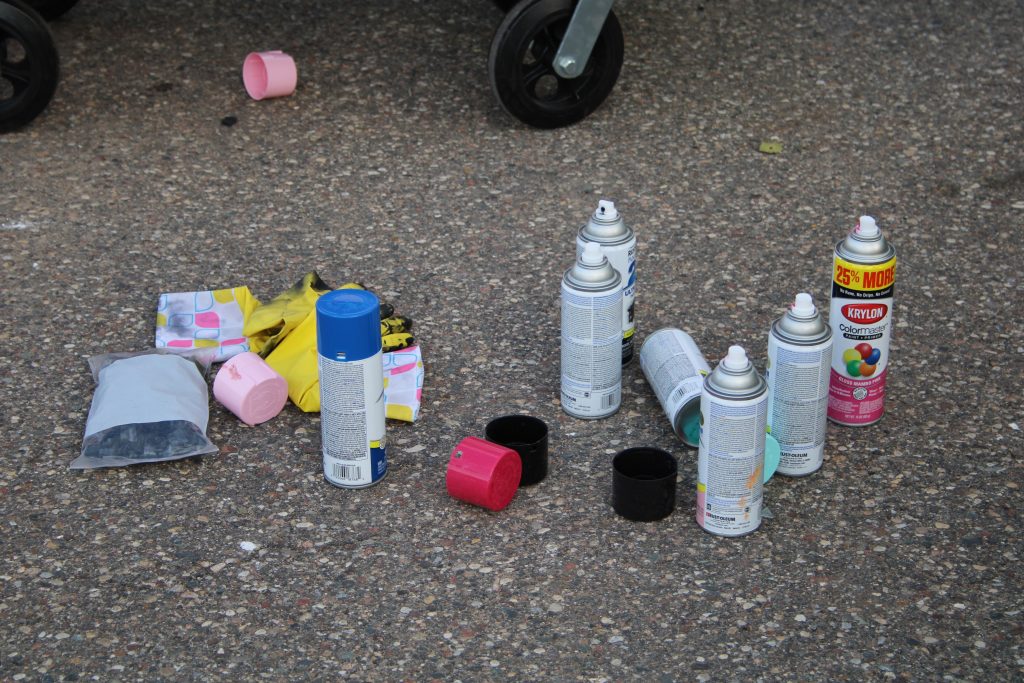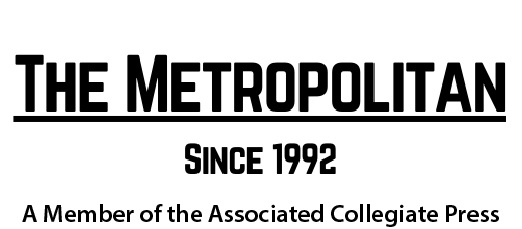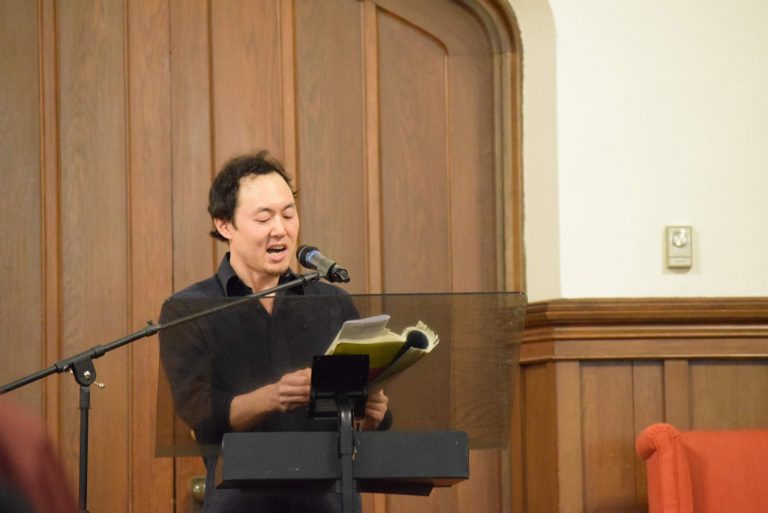Metro State Studio Arts Instructor Margo Selski leads a new graffiti arts class in the Fine Arts Center on the St. Paul campus. The inaugural 2019 summer course explored the basics of graffiti design and culture. (Brandon General / The Metropolitan)
Brandon General
Share:
Margo Selski, a community faculty member at Metro State, taught a new course over the summer where students were introduced to graffiti art. This pilot project was designed to both educate class members about graffiti protocol and cultivate pride in original “tags.”
Selski was a member of the Chicago graffiti art scene back in the 1970s. She beamed as she reminisced about seeing train cars emblazoned with her tag on the side.
In those early years, she worked hard to develop her tag. This work often included long hours honing designs in her sketchbook, especially on the days when she couldn’t afford to buy a can of spray paint.
In addition to teaching, Selski specializes in fine art. She currently has oil paintings displayed in California and New York galleries.
Her real-world experience with different art genres, along with a willingness to share hard-learned lessons, combine to make Selski an asset to Metro State students.
During the graffiti course, they learn mostly through doing. For one session, the classroom was a park in downtown St. Paul where students spray-painted various surfaces using personalized stencils. Their designs were meant to elicit a feeling of nature for urban families. The class received permission from the city of St. Paul to contribute artwork to the park.
On another day, each student contributed to a collective tag on a huge eight-by-ten-foot canvas.

Students also relied on other art techniques to hone their tag work, including shaping molding clay and sketching.
While skill-development is important, the main lesson Selski wants students to take from the course can’t be learned through classroom activities—personal integrity. Selski encourages students to not only cultivate pride in their own artwork, but others’ work as well.
There is a code of ethics that must be followed.
In the world of graffiti art, reputation is everything. Violating or altering another artist’s creation without permission could spell the end of a tagging career. Once those boundaries have been crossed, it’s very difficult to repair relationships with other artists. Taggers will often band together, ensuring that all of the offender’s tags will be violated in turn.
Merriam Webster’s dictionary defines graffiti as, “usually unauthorized writing on a public surface.” This meaning suggests that whether tags are done with or without authorization, they’re still graffiti. Nevertheless, often graffiti and vandalism are seen as being synonymous. So what is the difference between the two?
It all comes down to a single word: permission. Selski reminds students that there are spaces within the Twin Cities that both allow and encourage graffiti art. One of those places is Indigenous Roots, a cultural arts center near the St. Paul Campus. The class even explored taking a trip there to tag a wall.
Selski believes that artists who visit these types of settings will generate fresh ideas, meet other artists, and build a sense of community. This course teaches the essentials for graffiti technique, but that is just the beginning. With hard work and personal integrity, a tagger can build a bold reputation as an artist, one can of spray paint at a time.


